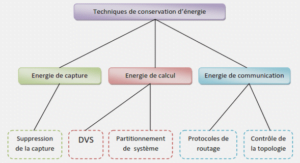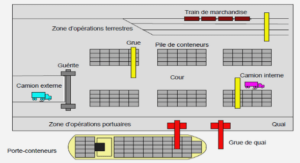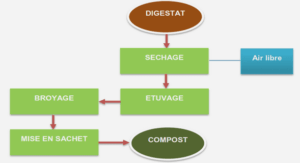Human impact: forest harvesting
LONG-TERM VARIABILITY OF CLADOCERANS IN BOREAL SHIELD LAKES UNDER NATURAL AND HUMAN DISTURBANCES
Introduction
In Quebec, the high number of lakes scattered over the boreal forest biotope constitutes an important natural resource. The fish communities they shelter sustain a popular recreational fishing activity that generates important income for the province. Over time, the boreal forest is affected by natural and human disturbances such as wildfires and forest harvesting. These events induce major disruptions on watersheds that are likely to have consequences on aquatic ecosystems (Carignan et al. 2000).
Zoopiankton is a major component of lake ecosystems. They act as an important food source for fish and planktivore invertebrates as well as being effective algae and organic matter grazers. Therefore, the role they play in recycling nutriments from the bottom to the top of the food-chain is crucial within aquatic ecosystems (Korhola and Rautio 2001; Sweetman and Smol 2006). Many short-term studies have been conducted to determine the consequences of natural and human watershed disturbances on zooplanktonic communities inhabiting boreal forest lakes. A study of Finnish lakes revealed a slight increase in copepod and cladoceran densities in response to forestry operations (Rask et al. 1998). In Quebec (Canada), Patoine et al. (2000) observed an increase of calanoid biomass in lakes within a burned watershed and a decrease in lakes within harvested watersheds during the first two years following a disturbance. However, no significant differences were observed in zooplankton richness and assemblages after perturbations, though variation among lakes and among sampling dates were important (Patoine et al. 2002a). A more recent study on Quebec Boreal Shield lakes also could not detect any effects on zooplanktonic community structure from forest harvesting (Winkler et al. 2009). The results of these studies indicate a great range in zooplankton response to watershed disturbance. Even lakes without forestry perturbation on their watershed seemed to show high variation in the structure of their zoopiankton communities over the years. This suggests that various naturally occurring events might induce enough impact on zooplankton communities to contribute significantly to their short term response to watershed disturbances. Therefore, to assess the importance of this natural contribution and to better understand the ecological significance of shortterm effects, it is essential to look at the evolution of zooplankton communities over a longer time frame. Paleolimnology allows the reconstruction of long-term time series of zooplankton communities’ structure. Exoskeletons of some zooplankton species are preserved in benthic sediments and can be used as indicators of past and present-day communities’ structure (Frey 1986). Cladocerans are the most frequently used biological indicators among the main zooplankton groups, as they are sensitive not only to biological changes and to their trophic implications but also to physicochemical alterations (Patoine et al. 2002a). Furthermore, among all the organisms frequently leaving fossils in sediments, cladocerans are the best preserved (Korhola 1999).
Long term structural evolution of cladoceran communities under watershed disturbances has been examined in many papers. Paterson (1994) observed changes in cladoceran accumulation rates and richness over time in lakes of the Adirondack Mountains (United States), though there was not enough evidence linking these variations to the harvesting operations that occurred at the beginning of 20th century. The impressive temporal synchronization of these variations between studied lakes led the author to suspect the predominance of a regional disturbance over watershed-only events. Another study aimed to verify if subtle changes observed in diatom composition following forest harvesting (Laird and Gumming 2001) were also detectable in cladoceran communities of the same lakes over time (Bredesen et al. 2002). Four of the six studied lakes showed significant changes at decadal resolution in cladoceran communities’ structure following
forestry operations. At higher resolution (~2 years), only two of these lakes showed significant changes. The increase of nutrients associated with harvesting activities on watersheds was pointed out as an explanation of these results.
The main goal of this project is to understand and describe the natural variability of zooplanktonic communities in Quebec boreal forest lakes. This study also aims to compare the short-term variability of zooplanktonic communities following a human or a natural disturbance, such as forest harvesting and wildfires respectively, along with the long-term natural variability of these communities.
Methods
Study site and lakes
The study region is located around latitude 50° in the boreal forest, north of Lac SaintJean in Québec, Canada (Fig. 1). The vegetation in the area, part of the Western black spruce feathermoss domain, mainly consists of black spruce (Picea mariana (Mills.)), balsam fir {Abies balsamea (L.) Mills), white birche (Betula papyriferd), and trembling aspen (Populus tremuloides). Three lakes (Chantale, Maurice and Aux Huards) were selected on the basis of their comparable geographical and morphological parameters, as well as their disturbance history (Table 1). Ail lakes had a 20-m buffer strip of forest kept standing around them and along their streams after forest harvesting. Though laminated sediments were not found in any lakes, cores’ integrity was thoroughly checked using xrays and later confirmed with 210Pb dating.
Sediment cores were recovered at the deepest point of each lake using a HTH gravity corer (Glew et al 2001; Renberg and Hansson 2008) with a tube length of 50 cm and an internal diameter of 8 cm, operated from a twin-anchored inflatable Zodiac. A total of two 36-cm cores were obstained in Lac Chantale, two 28-cm cores in Lac Maurice and two 33- cm cores in Lac Aux Huards. The first core recovered from each lake was extruded using a close-interval extruder into 0.25 cm intervals (Glew 1988). Sediments were then quickly transferred to labelled clip-lock bags and immediately frozen (-20°C) until laboratory processing. The second core was frozen intact, then examined using an x-ray machine for any varves that were not immediately visible and kept as reference material.
Sample preparation
Samples were freeze-dried prior to analysis. For each lake, one 0,25-cm interval was analysed in each 1-cm strata. A precise weight of dried sediment, varying from 0.0096 to 0.7590 grams, was subsampied for each 0.25 cm interval. The weight needed was determined by performing a quick scan of two random intervals to ensure that the quantity of fossil pieces was enough for analysis (Frey 1986). Weighted dry sediment subsamples were defîoccuiated in a 10% potassium hydroxide (KOH) solution, stirred and heated on a hotplate (80°C) until complete homogenization. Filtration was performed on the homogenized sediments through two different sieves: a 63 um mesh size sieve for larger chydoridae headshells and cladoceran ephippia, and a 32 um mesh size sieve to collect the leftovers and the smaller parts. Filtered sediments were placed onto slides, using a micropipette, and deposited on a hotplate until most of the water was evaporated. Slices were then mounted using slides and cover slips.
|
Table des matières
RÉSUMÉ
REMERCIEMENTS
TABLE DES MATIÈRES
LISTE DES TABLEAUX
LISTE DES FIGURES
LISTE DES ANNEXES
INTRODUCTION GÉNÉRALE
1. Introduction
2. Methods
2.1 Study site and lakes
2.2 Sampling
2.3 Samples preparation
2.4 Cladoceran analysis
2.5 Sediments and wildfires dating
2.6 Data analysis
3. Results
3.1. Sediments and wildfires aging
3.2. Cladoceran analysis
3.2.1 Abundance
3.2.2. Assemblages
4. Discussion
4.1. Natural variability: wildfires
4.2 Human impact: forest harvesting
5. Conclusion
CONCLUSION GÉNÉRALE
RÉFÉRENCES
ANNEXES
![]() Télécharger le rapport complet
Télécharger le rapport complet






